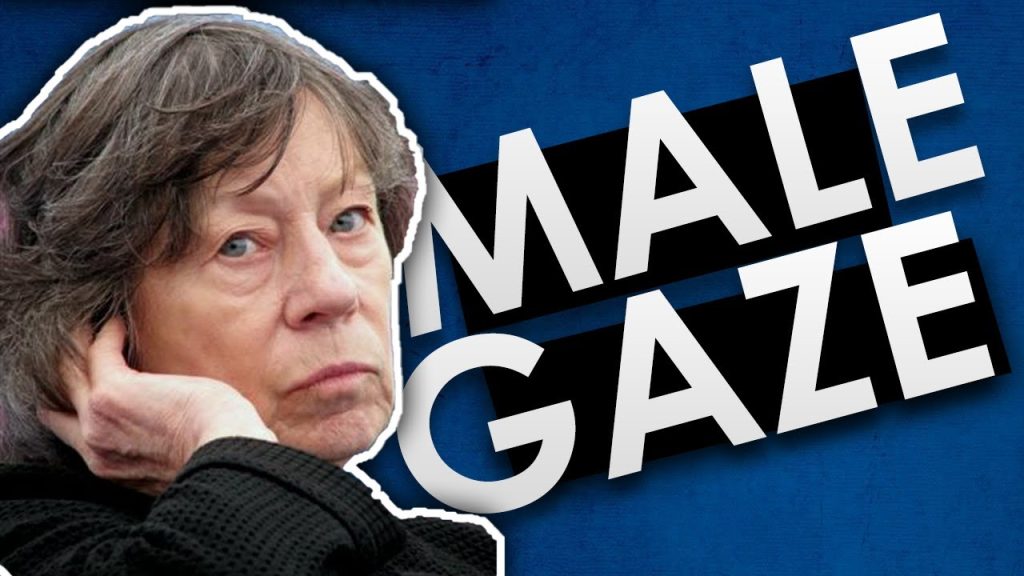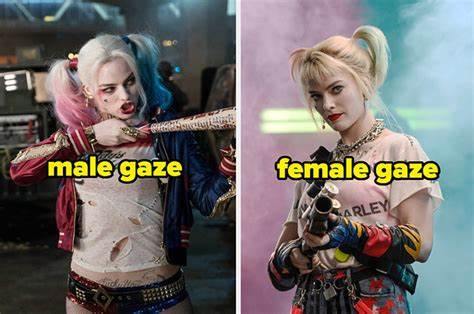The “gaze” is a term that describes how viewers engage with visual media. The “male gaze” invokes the sexual politics of the gaze and suggests a sexualised way of looking that empowers men and objectifies women.
The postman Always Rings Twice (1946) is a good example of the male gaze. As there is a scene when two-men are talking and it is a wide shot so you can get a good view of everything in that scene and as the other man runs out, the other one stays and then Cora Smith comes into the shot and we first get a close look at of her toes. Cora is wearing shorts and a crop top which shows a lot of skin this is sexualising her as this also gives the man less to visualise. Also the camera is mainly focused on her and as the audience we are getting close up shots in this scene as the man is rarely the centre of attention in this scene and is more in the background.
Using close-ups,the camera forces the viewers to stare at cora’s body.It creates a mode of looking that is sexual,voyesuric,and associated with the male protagonists point-of-view.
The mainstream Michael Bay blockbusters Transformers series cut and dry exemplar of the cinematic male gaze.Bay lingers on Whitley’s bodily attributes for the duration of the film,with lingering shots on her bottom,breasts,legs and lips. As often as possible she is viewed from the floor level-an exercise in clearly exhibitionistic vouigerurism.

Women then strands in patriarchal culture as signifier for the male other, bound by a symbolic order in which man can live out his phantasies and obsessions through linguistic command by imposing them on the silent image of women still tied to her place as bearer of meaning, not marker of meaning.(Laura Mulvey 1995)
Sexual instincts and identification processes have a meaning within the symbolic order which articulates desire.Desire,born with language, allows the possibility of transcending the instinctual and the imaginary, but it’s point of reference continually returns to the traumatic moment of it’s birth:the castraction complex.Hence,the look, pleasurable in form, can be threatening in content, and it is women as representation/image that crystalizes this paradox.(Laura Mulvey 1995)
In a world ordered by sexual imbalance, pleasure in looking has been split between active/male and passive/female. The determining male gaze projects it’s phantasy on the female figure which is styled accordingly. In their traditional exhibitionistic role women are simultaneously looked at and displayed, with their appearance coded for strong visual and erotic impact so that they can be said to connote to-be-looked-at-ness.A women’s performs within the narrative: the gaze of the spectator and that of the male characters in the film.(Laura Mulvey 1975)
References:
Janice Loreck┬ĀTeaching Associate in the School of Media (2023) Explainer: What does the ŌĆśmale gazeŌĆÖ mean, and what about a female gaze?, The Conversation. https://theconversation.com/explainer-what-does-the-male-gaze-mean-and-what-about-a-female-gaze-52486 (Accessed: 04 December 2023).
Loladinizio and Loladinizio (2014) Media and Cultural Analysis, spring 2014, Media and Cultural Analysis Spring 2014. Available at: https://www.karanovic.org/courses/mca008/archives/1487 (Accessed: 04 December 2023).
Laura Mulve,”Visual pleasure and narrative cinema”.In The sexual subject.A screen reader is sexuality,pp.22-34


Hi! I loved reading your blog, you included a lot of good points and a good example to back it. Do you think that in the future there will be a difference in a positive or negative way of the male, or female, gaze?